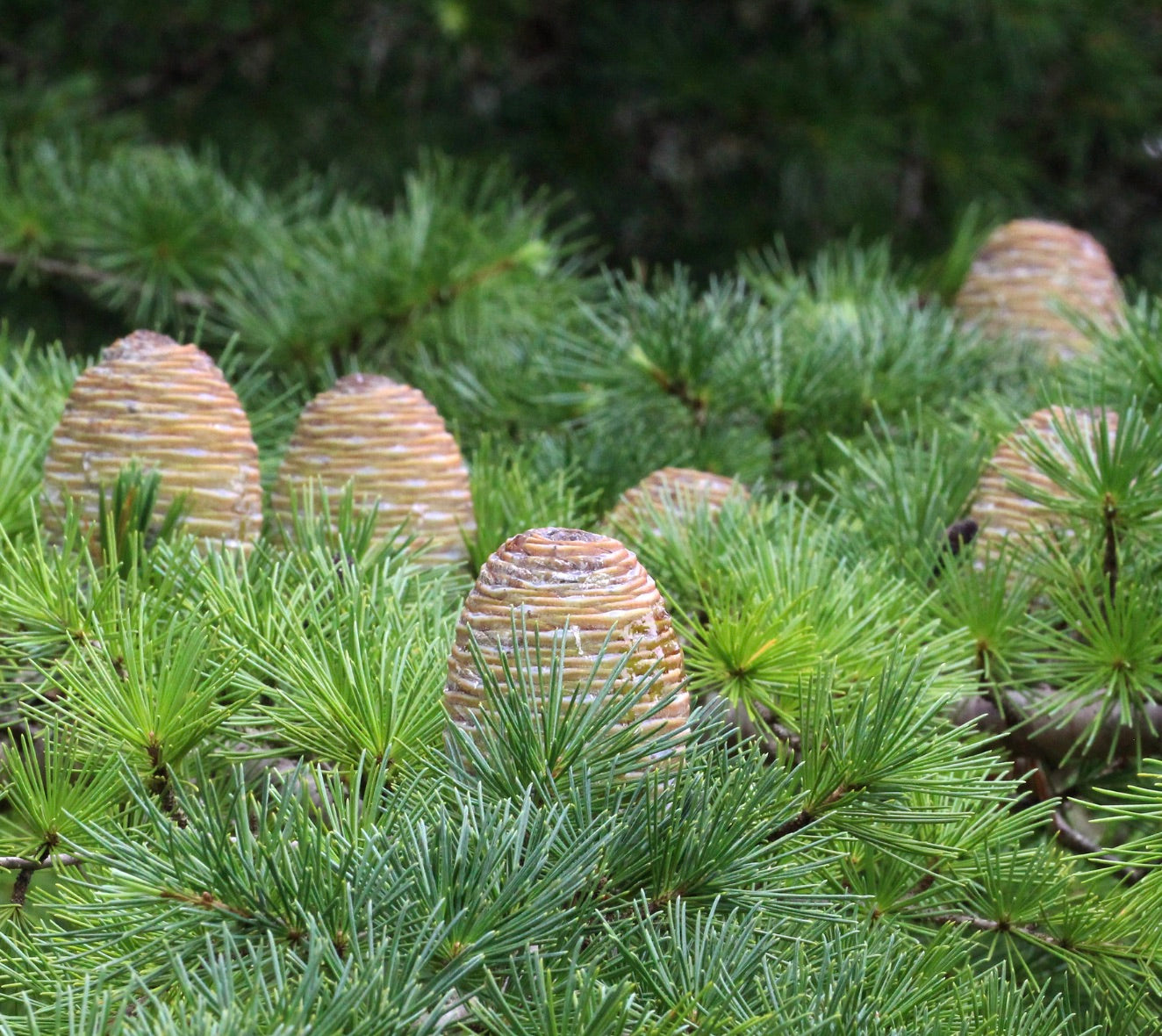- Catalogue Plants
Cedrus atlantica
Cedrus atlantica
Couldn't load pickup availability
Plant Description
Cedrus atlantica, commonly known as the Atlas cedar, is a majestic evergreen conifer tree native to the Atlas Mountains of North Africa. This tree is renowned for its impressive stature, gracefully cascading branches, and striking blue-green needles.
Cedrus atlantica is a large and imposing tree that can reach heights of 40 to 60 feet (12 to 18 meters) or more when fully mature. It features a pyramidal or broadly conical crown with densely arranged branches that elegantly drape downward. The tree's foliage consists of clusters of sharp, needle-like leaves that are bluish-green in color, creating a captivating contrast against the darker bark.
One of the distinctive features of the Atlas cedar is its robust cones. These cones are cylindrical in shape and can measure up to 4 inches (10 cm) in length. They initially appear green but gradually mature to a woody brown color as they age. The cones release seeds that are sought after by various wildlife species.
Atlas cedars are prized for their beauty and are often used in landscaping and ornamental plantings. Their unique form and striking foliage make them a standout addition to gardens and park landscapes, particularly in regions with a Mediterranean or temperate climate.
Cultivation: Cultivating Cedrus atlantica, the Atlas cedar, requires attention to its specific requirements:
-
Climate: This tree is well-suited to temperate climates. It thrives in regions with mild, wet winters and warm, dry summers. It is suitable for USDA hardiness zones 6 to 9.
-
Sunlight: Plant Atlas cedars in a location that receives full sun to partial shade. While they can tolerate some shade, they typically grow best in areas with ample sunlight.
-
Soil: Cedrus atlantica prefers well-draining soil with moderate fertility. It can adapt to a range of soil types, including sandy and loamy soils. Soil pH should ideally be slightly acidic to neutral.
-
Watering: Established Atlas cedars are relatively drought-tolerant and require minimal watering. However, it's essential to provide consistent moisture during the tree's establishment period and in times of prolonged drought.
-
Mulching: Apply a layer of organic mulch around the base of the tree to conserve soil moisture, regulate temperature, and suppress weed growth.
-
Pruning: Prune the tree as needed to remove dead or diseased branches and maintain its shape. Pruning is typically done during the dormant season.
-
Pests and Diseases: Atlas cedars are generally resistant to most pests and diseases. However, occasional monitoring is recommended to address any issues promptly.
Cedrus atlantica, with its stately presence and striking blue-green foliage, is a prized addition to landscapes and gardens. Its adaptability to various soil types and climates, along with its ornamental value, make it a sought-after choice for gardeners and landscapers looking to enhance the beauty and character of outdoor spaces.
IMPORTANT: Please be aware that picture 1 show adult plant not for sale, the offer is for a plant in the dimension indicated in title description.
Disclaimer: Please keep on mind that the plant may have grown since pictured. Also be aware that most plants change across seasons. If present foliage could have been fallen or change in its color.
Botanical family: Pinaceae
Botanical genus: Cedrus
Botanical species: Cedrus atlantica
SKU:BA-1633-S
Cultivation
Cultivation
Additional information
Additional information
Plant Height:
Plant Diameter:
Picture Taken on:
Pot Size:
Grafted/Not Grafted:


